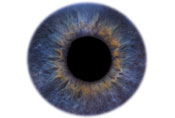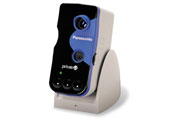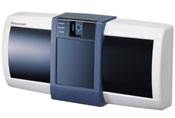Difference between revisions of "Ashwina Soekhoe"
| Line 33: | Line 33: | ||
== Current Use == | == Current Use == | ||
Iris-recognition success stories include restricted-access solutions in airports and nuclear power plants, and work is underway to implement the technology at border crossings and customs checkpoints. Your iris is already your passport in the Netherlands and Canada, where trusted travelers can bypass lengthy customs and immigration lines by enrolling in a fastpass program for a small fee.<br> | |||
It's one of the newest weapons in fighting terrorism, while helping passengers get through border control more quickly | It's one of the newest weapons in fighting terrorism, while helping passengers get through border control more quickly. As this border control official demonstrates, passengers put their passport through a scanner, take a brief look at a camera, and a few seconds later walk through a gate. The eye scan can track people's movements and check if they're on terrorist watch lists and police criminal databases. | ||
== Future Perspectives == | == Future Perspectives == | ||
Revision as of 12:31, 24 March 2006
Work in progress....
Product of the future: Iris Scanner - Identification Tool
 |
| Identification through Iris Scanning |
Intoduction
The Product
At this moment several big companies, such as Panasonic, Motorola, LG are making iris-scanners. The iris-scanners are now available on the market in different sizes and with different extra functionalities. Some are more advanced and more sophisticated, depending on the industries they are to be used in. However, the main functionality "iris scanning for identification" is the same for every brand or type.
Current Use
Iris-recognition success stories include restricted-access solutions in airports and nuclear power plants, and work is underway to implement the technology at border crossings and customs checkpoints. Your iris is already your passport in the Netherlands and Canada, where trusted travelers can bypass lengthy customs and immigration lines by enrolling in a fastpass program for a small fee.
It's one of the newest weapons in fighting terrorism, while helping passengers get through border control more quickly. As this border control official demonstrates, passengers put their passport through a scanner, take a brief look at a camera, and a few seconds later walk through a gate. The eye scan can track people's movements and check if they're on terrorist watch lists and police criminal databases.
Future Perspectives
Japan is testing iris recognition in airline ticket kiosks." Future developments might lead iris recognition into shopping malls, ATMs, maybe even the local convenience store. "Eye-d?"
References


